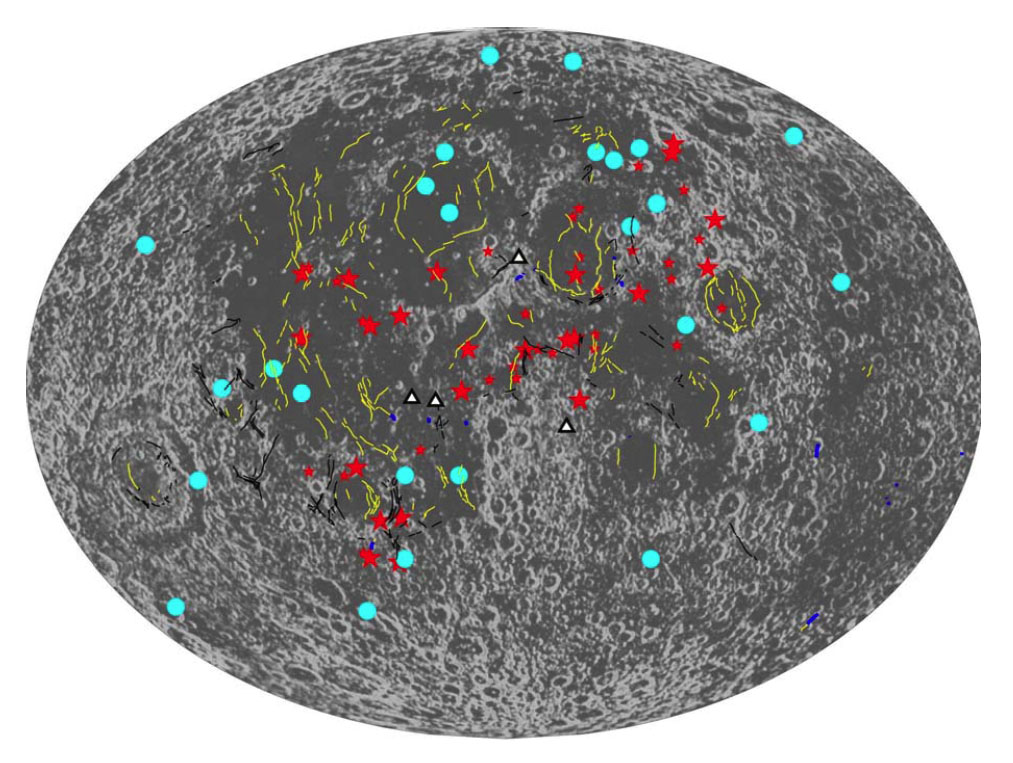Difference between revisions of "July 8, 2009"
| (2 intermediate revisions by the same user not shown) | |||
| Line 1: | Line 1: | ||
__NOTOC__ | __NOTOC__ | ||
=Tectonic Targets= | =Tectonic Targets= | ||
| + | <!-- Start of content --> | ||
<!-- ws:start:WikiTextHeadingRule:2:<h1> --> | <!-- ws:start:WikiTextHeadingRule:2:<h1> --> | ||
<!-- ws:start:WikiTextLocalImageRule:8:<img src="/file/view/LPOD-July8-09.jpg/80550861/LPOD-July8-09.jpg" alt="" title="" /> -->[[File:LPOD-July8-09.jpg|LPOD-July8-09.jpg]]<!-- ws:end:WikiTextLocalImageRule:8 --><br /> | <!-- ws:start:WikiTextLocalImageRule:8:<img src="/file/view/LPOD-July8-09.jpg/80550861/LPOD-July8-09.jpg" alt="" title="" /> -->[[File:LPOD-July8-09.jpg|LPOD-July8-09.jpg]]<!-- ws:end:WikiTextLocalImageRule:8 --><br /> | ||
<em>image from [http://www.lpi.usra.edu/meetings/lro2009/pdf/6051.pdf C. L. Johnson, T. R. Watters and S. J. Mackwell]</em><br /> | <em>image from [http://www.lpi.usra.edu/meetings/lro2009/pdf/6051.pdf C. L. Johnson, T. R. Watters and S. J. Mackwell]</em><br /> | ||
<br /> | <br /> | ||
| − | Before the Lunar Reconnaissance Orbiter arrived at the Moon, Arizona State University (the home institution of the camera team leader), hosted a meeting on selecting targets to address science questions. One of the papers in the abstract [http://www.lpi.usra.edu/meetings/lro2009/pdf/program.pdf volume] includes this schematic map of tectonic features. The most prominent tectonic landforms are mare ridges (yellow) and concentric rilles (some of the black lines), both due to deformation caused by massive piles of mare lavas. A potentially more interesting, smaller type of faulting is indicated by short, hard to see blue lines which represent lobate scarps. A relatively small number of these are [http://lpod. | + | Before the Lunar Reconnaissance Orbiter arrived at the Moon, Arizona State University (the home institution of the camera team leader), hosted a meeting on selecting targets to address science questions. One of the papers in the abstract [http://www.lpi.usra.edu/meetings/lro2009/pdf/program.pdf volume] includes this schematic map of tectonic features. The most prominent tectonic landforms are mare ridges (yellow) and concentric rilles (some of the black lines), both due to deformation caused by massive piles of mare lavas. A potentially more interesting, smaller type of faulting is indicated by short, hard to see blue lines which represent lobate scarps. A relatively small number of these are [http://www2.lpod.org/wiki/December_1,_2008 known], most are found in the highlands which were not well covered with adequate high resolution Apollo era imaging. But with LRO meter-scale images many more of these low angle thrust faults are expected to be found. They are potentially exciting for two reasons; 1) they may record shrinkage of the Moon's diameter as it cooled, and 2) some faults look very young and their lengths suggest they may have been formed by significantly larger moonquakes than recorded by Apollo seismometers. The pale blue dots are regions to look for lobate scarps for they are the epicenters of shallow moonquakes; the deep quakes (red stars) probably have no surface manifestations. The white triangles show the very limited distribution of the Apollo seismometers; unfortunately none of the current generation of lunar spacecraft will update our nearly 40 year old lunar geophysical data sets. Pictures aren't everything.<br /> |
<br /> | <br /> | ||
<em>[mailto:tychocrater@yahoo.com Chuck Wood]</em><br /> | <em>[mailto:tychocrater@yahoo.com Chuck Wood]</em><br /> | ||
| Line 14: | Line 15: | ||
C. L. Johnson, T. R. Watters and S. J. Mackwell, 2009, What new can LRO tell us about lunar thermal evolution, interior structure and dynamics? <em>Lunar Reconnaissance Orbiter Science Targeting Meeting</em>, Abstract [http://www.lpi.usra.edu/meetings/lro2009/pdf/6051.pdf #6051].<br /> | C. L. Johnson, T. R. Watters and S. J. Mackwell, 2009, What new can LRO tell us about lunar thermal evolution, interior structure and dynamics? <em>Lunar Reconnaissance Orbiter Science Targeting Meeting</em>, Abstract [http://www.lpi.usra.edu/meetings/lro2009/pdf/6051.pdf #6051].<br /> | ||
<br /> | <br /> | ||
| + | <p><b>Yesterday's LPOD:</b> [[July 7, 2009|What Do You See?]] </p> | ||
| + | <p><b>Tomorrow's LPOD:</b> [[July 9, 2009|Pictet Puzzle]] </p> | ||
<hr /> | <hr /> | ||
| + | {{wiki/ArticleFooter}} | ||
Latest revision as of 07:29, 28 October 2018
Tectonic Targets

image from C. L. Johnson, T. R. Watters and S. J. Mackwell
Before the Lunar Reconnaissance Orbiter arrived at the Moon, Arizona State University (the home institution of the camera team leader), hosted a meeting on selecting targets to address science questions. One of the papers in the abstract volume includes this schematic map of tectonic features. The most prominent tectonic landforms are mare ridges (yellow) and concentric rilles (some of the black lines), both due to deformation caused by massive piles of mare lavas. A potentially more interesting, smaller type of faulting is indicated by short, hard to see blue lines which represent lobate scarps. A relatively small number of these are known, most are found in the highlands which were not well covered with adequate high resolution Apollo era imaging. But with LRO meter-scale images many more of these low angle thrust faults are expected to be found. They are potentially exciting for two reasons; 1) they may record shrinkage of the Moon's diameter as it cooled, and 2) some faults look very young and their lengths suggest they may have been formed by significantly larger moonquakes than recorded by Apollo seismometers. The pale blue dots are regions to look for lobate scarps for they are the epicenters of shallow moonquakes; the deep quakes (red stars) probably have no surface manifestations. The white triangles show the very limited distribution of the Apollo seismometers; unfortunately none of the current generation of lunar spacecraft will update our nearly 40 year old lunar geophysical data sets. Pictures aren't everything.
Chuck Wood
Technical Details
Related Links
C. L. Johnson, T. R. Watters and S. J. Mackwell, 2009, What new can LRO tell us about lunar thermal evolution, interior structure and dynamics? Lunar Reconnaissance Orbiter Science Targeting Meeting, Abstract #6051.
Yesterday's LPOD: What Do You See?
Tomorrow's LPOD: Pictet Puzzle
COMMENTS?
Register, Log in, and join in the comments.



